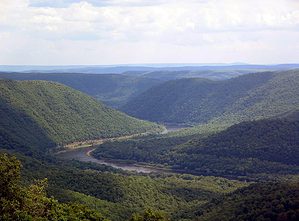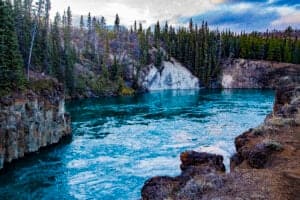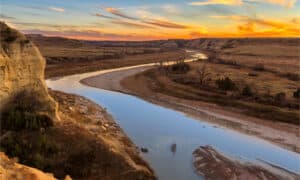Montana is a fly fisherman’s dream come true. With over 170,000 miles of rivers and streams, it’s no wonder anglers worldwide flock to this western paradise. It’s the ideal place to test your skills and reel in the biggest catches. Whether you’re looking for the challenge or the tranquillity of a pristine river flowing through rolling hills, Montana has it all. The following article will explore the top 5 rivers in Montana for fly fishing.
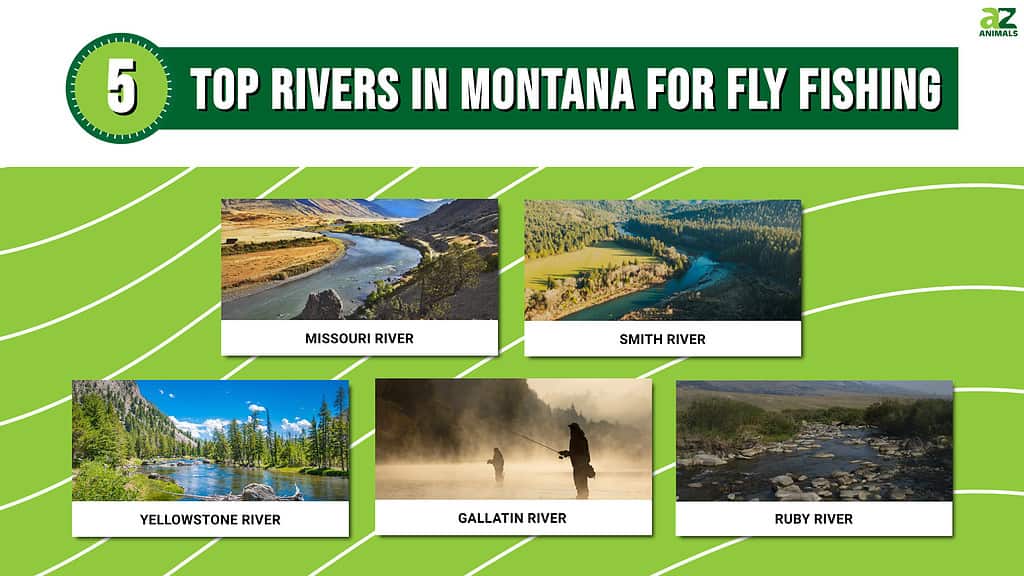
What Is Fly Fishing?
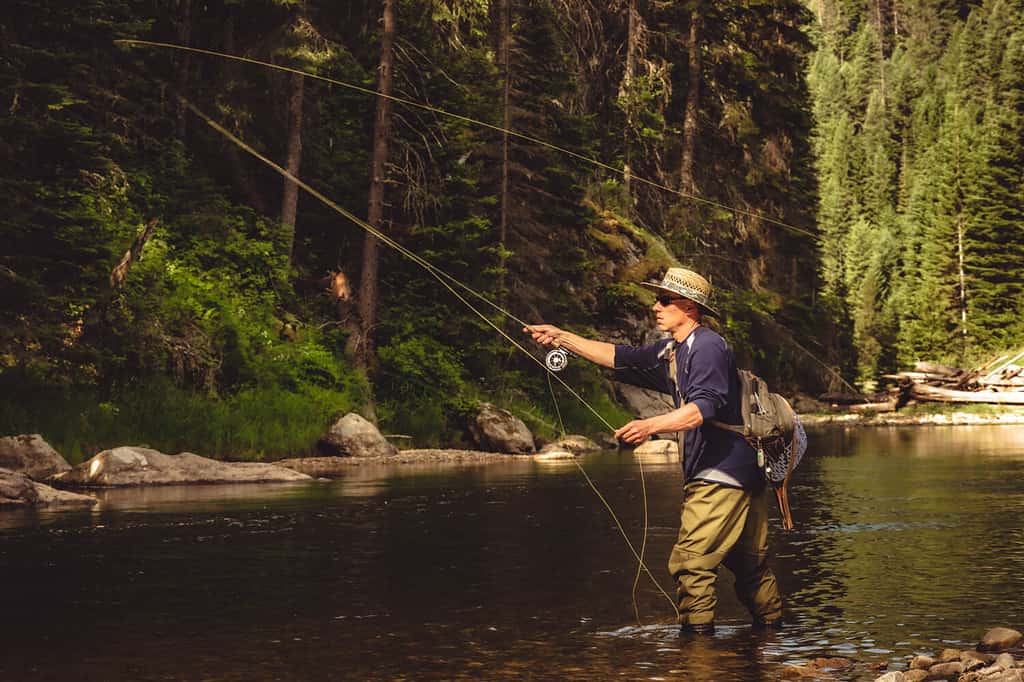
Fly fishing is often associated with trout fishing but can be used to catch a wide range of fish species.
©OLya_L/Shutterstock.com
Fly fishing is a type of angling that uses a weighted line and an artificial “fly” to lure fish. Unlike traditional fishing methods, fly fishing requires a specialized casting technique. This technique mimics the movement of insects and other natural prey.
Fly fishing is often associated with trout fishing but can be used to catch a wide range of fish species. Fly fishing can be used in both freshwater and saltwater. This sport requires a great deal of patience, skill, and knowledge of fish behavior and habitat.
Missouri River
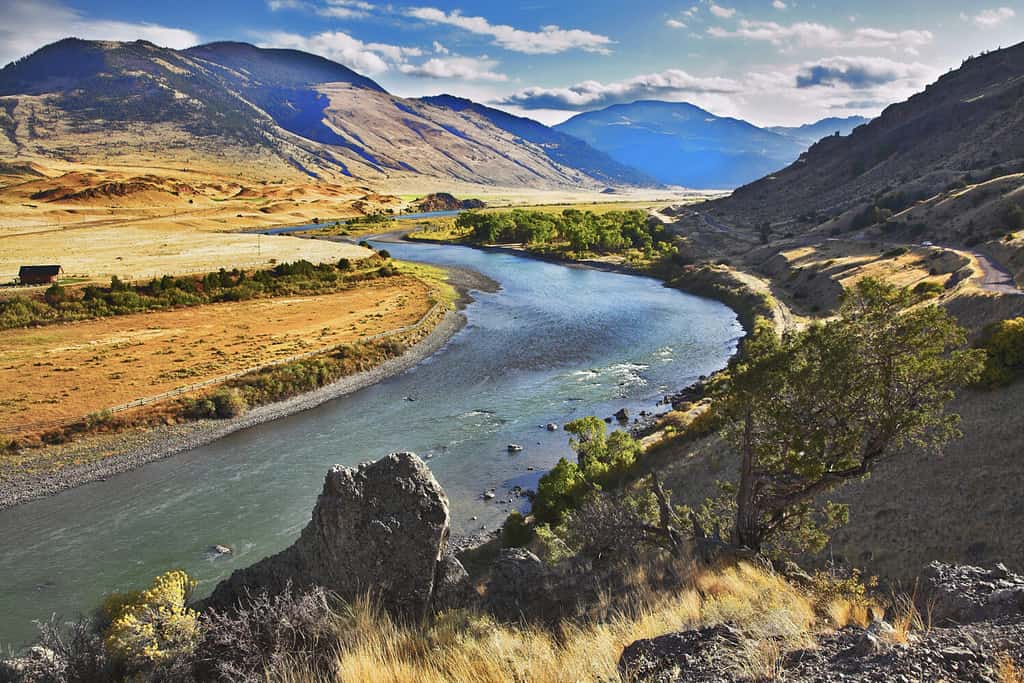
The upper Missouri River region has been home to various Native American tribes for centuries.
©kavram/Shutterstock.com
The eastern slope of the Rockies near Three Forks, Montana, marks the starting point of the Missouri River. This river is the longest in the United States and spans over 2,500 miles. This river is highly regarded among anglers, especially for fly fishing in Montana.
The upper Missouri River region has been home to various Native American tribes for centuries. These tribes include the Hidatsa, Crow, and Blackfeet French. Explorers Louis Jolliet and Jacques Marquette first encountered the river’s mouth in 1673 while paddling down the Mississippi River.
A typical guided fly fishing trip on the Missouri River allows anglers to float an 8-15 mile stretch of the river daily. The river flows through the historic Clark & Lewis country, offering stunning scenery to accompany the blue ribbon fly fishing. This fly fishing experience on the Missouri River is suitable for novice and experienced anglers alike. The Missouri River provides learning opportunities, challenges, and success for all.
Types Of Fish
The Missouri River is home to diverse fish species, with rainbow trout and brown trout being the most frequently encountered. However, the river boasts some of the state’s highest densities of wild trout. These trouts are, on average, around 17 inches.
But carp fishing has become increasingly popular in recent years on the upper Missouri River. This is due to the fact that carp fishing offers some of the best fly fishing opportunities.
While the Missouri River is known for its abundant trout populations, there are also larger fish lurking in its depths. Skilled streamer anglers may occasionally hook a fish in the incredible 25 to 30-inch range.
Best Spot For Fly Fishing
While the Missouri River has plenty of fishing spots, only a small stretch below Holter Dam is considered a prime location for blue-ribbon fly fishing. In fact, many argue that this area allows for the best fly fishing opportunities in the United States!
For those looking to catch monster rainbow trout, April is an especially exciting time to visit. During this season, the Missouri River between Hauser Lake and Canyon Ferry is filled with large spawning rainbows. It’s a great chance to catch a real trophy fish!
Smith River
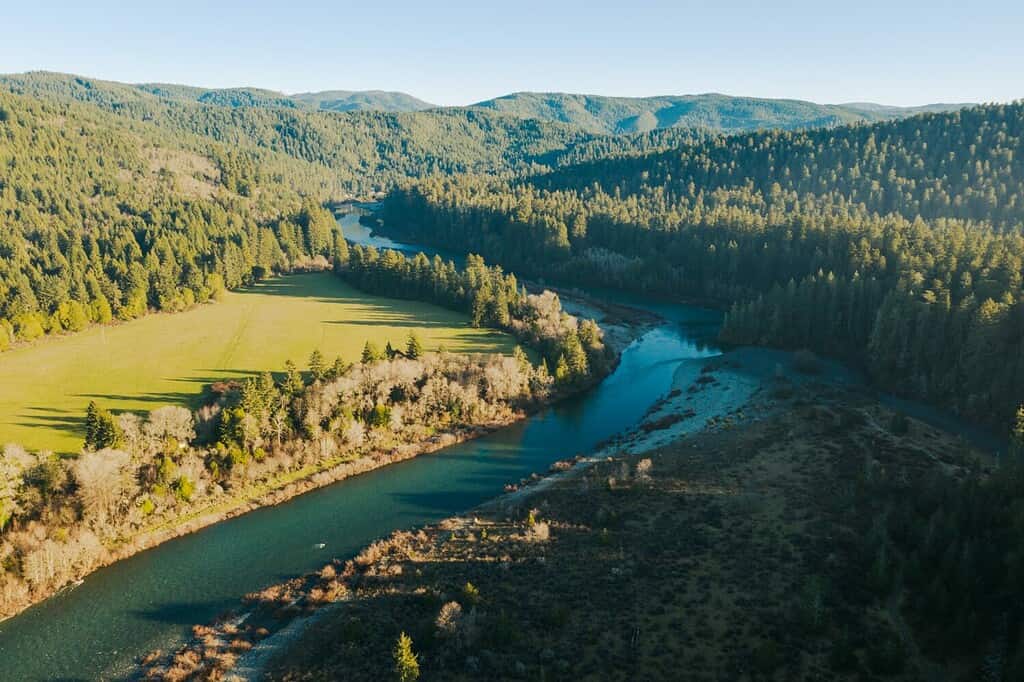
Securing a permit to explore the Smith River is a highly coveted opportunity due to its strictly regulated permit process.
©Manuela Durson/Shutterstock.com
The Smith River is a treasured natural wonder in Montana, renowned for its legendary float trip experience. With 60 miles of pristine wilderness, the river originates from the Castle Mountains in southern Meagher County. It flows northwest between Big Belt Mountains and the Little Belt.
Securing a permit to explore the Smith River is a highly coveted opportunity due to its strictly regulated permit process. Those who are lucky enough to be granted access can witness awe-inspiring limestone pillars and cliffs that line the river. The only signs of human intervention on this float are a small group of cabins.
Explorers William Clark and Meriwether Lewis named the river on July 15, 1805. The name was given in honor of Robert Smith, Secretary of the Navy then. The canyon created by the river might have been a passage route for early explorers. The tribes navigating this passage include Native American tribes like the Blackfeet, Crow, Salish, Shoshone, and Assiniboine. They likely used the passage to reach the bison-filled plains to the higher valleys through the rugged mountains.
Types Of Fish
According to historical records, the Smith River was once home to Arctic graylings. Today, the Smith River supports a variety of fish species. These species include brown, brook, and rainbow trout, as well as the occasional whitefish. These fish can be found in the 10 to 20-inch range. The brown trout is the largest and most prized catch.
Best Spot For Fly Fishing
If you’re looking for the best spot for fly fishing in the Smith River, the Smith River Access Site is the place to be. It’s the easiest point of entry for anglers, located just nine miles upstream from Camp Baker. This area is known for its abundance of rainbow, brown, and brook trout. It’s an excellent spot for a successful fishing trip.
Yellowstone River
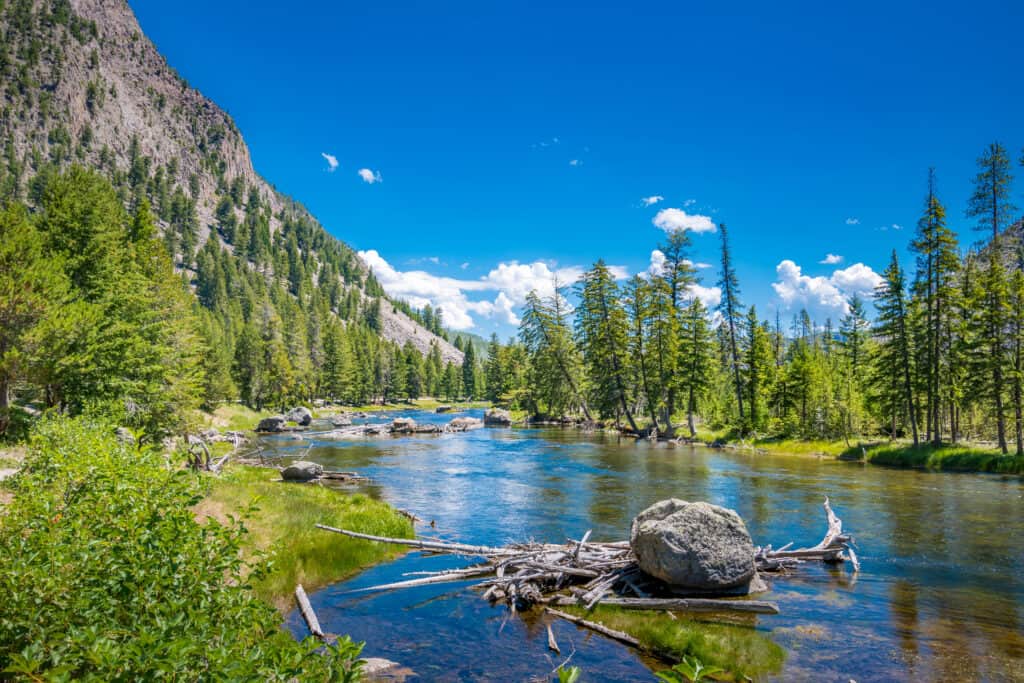
The Yellowstone River is perfect with its picturesque mountainous landscape and banks draped with cottonwood trees.
©NaughtyNut/Shutterstock.com
With more than 200 miles of trout-filled waters, the Yellowstone River is a stunning natural marvel flowing unobstructed for miles. This gives it the distinction of being the longest free-flowing river in the lower 48 states of the USA. Nestled amid Yellowstone National Park and the surrounding wilderness areas, this river draws anglers from around the globe seeking various unique fishing experiences.
Each stretch of the river has its own distinct features, making it an excellent hub of activity for fishing enthusiasts. Admirers of fly fishing consider this sprawling, untamed river to be the epitome of the Montana fishing experience.
The first documented expedition by people of European descent on the Yellowstone River occurred in 1806. While returning from his explorations in the Pacific Northwest, Lieutenant William Clark led a group that traveled down the river and encountered its majesty for the first time.
The Yellowstone River is perfect with its picturesque mountainous landscape and banks draped with cottonwood trees. A day on the river promises more than just a chance to catch wild trout; it offers glimpses of an array of wildlife, such as ospreys, eagles, moose, river otters, mule deer, and even black bears. Even when the fishing isn’t successful, leaving the river feeling anything but satisfied with the experience is hard.
Types Of Fish
The Yellowstone River boasts abundant fish species that thrive in its crystal-clear waters. Anglers can expect to catch various fish, including rainbow and brown trout, whitefish, channel catfish, shovelnose sturgeon, walleye, and smallmouth bass.
Best Spot For Fly Fishing
For avid fly fishermen looking for the best spot to cast a line in the Yellowstone River, the stretch from Gardiner to Carbella Access Site is a prime location. This area, situated at the boundary of Yellowstone National Park, offers excellent opportunities to catch cutthroat and rainbow trout.
Another must-visit spot is the stretch below Livingston. This area is home to brown trout, with a few rainbows in the mix, and is relatively less crowded, offering a more serene and intimate experience. The river holds some sizeable fish, making it a hotspot for anglers searching for a trophy catch.
Gallatin River
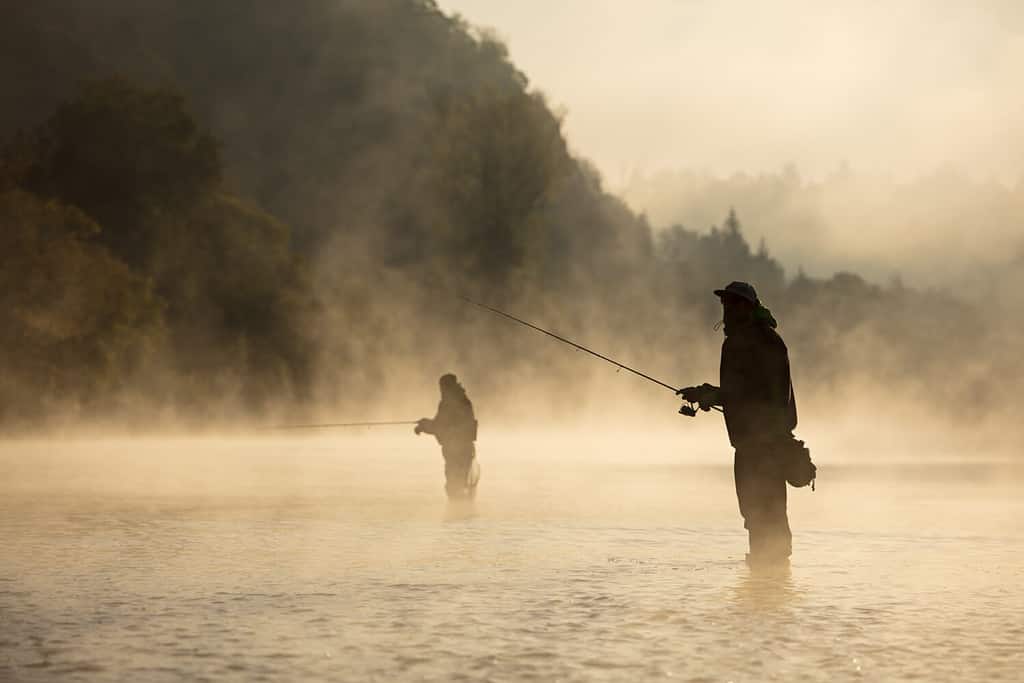
Nestled in the breathtaking Ruby Valley, the Ruby River is a remarkable small river that boasts surprisingly large trout despite its size.
©Lukas Gojda/Shutterstock.com
The Gallatin River is a highly esteemed blue ribbon river, and its origin lies at Gallatin Lake, which is situated at 9950 feet in Yellowstone National Park. The river’s path stretches for approximately 20 miles through a picturesque mountain meadow before entering the Gallatin Canyon close to the Taylor Fork drainage. The Gallatin Canyon’s upper regions provide a stunning alpine environment where the fishing scenes from the popular movie A River Runs Through It was filmed.
For countless centuries before Lewis and Clark arrived in 1805, various indigenous tribes had already revered the Gallatin Valley’s expanse, which had been their home among the magnificent mountain ranges and winding rivers.
Fly fishers love the Gallatin immensely due to its incredible beauty, crystal clear water, and plentiful trout. Although the river is not well-known for producing trophy-sized trout like some of the other large rivers in the area, the Gallatin River’s unique features make it a favored spot for many. In addition, its abundant trout population often leads to high catch rates and fast action.
Types Of Fish
Rainbow trout are the most common species found in the river, while brown trout are also frequently caught. Cutthroat trout, whitefish, and brook trout are also present in the river, providing a diverse fishing experience for anglers. Arctic graylings, which prefer cold water, can also be found in the river’s upper stretches, adding to the river’s unique character.
Best Spot For Fly Fishing
Cameron Bridge on the Gallatin River is undoubtedly the best spot for fly fishing near Bozeman, especially for wild trout. The location is easily accessible, located just a short drive west of town, and provides numerous miles of wade fishing access.
Though it can be crowded near the access point, a brief hike upstream or downstream usually leads to less crowded fishing areas. Anglers can expect to catch rainbow and brown trout that average around 13 inches, with larger fish caught regularly.
Ruby River
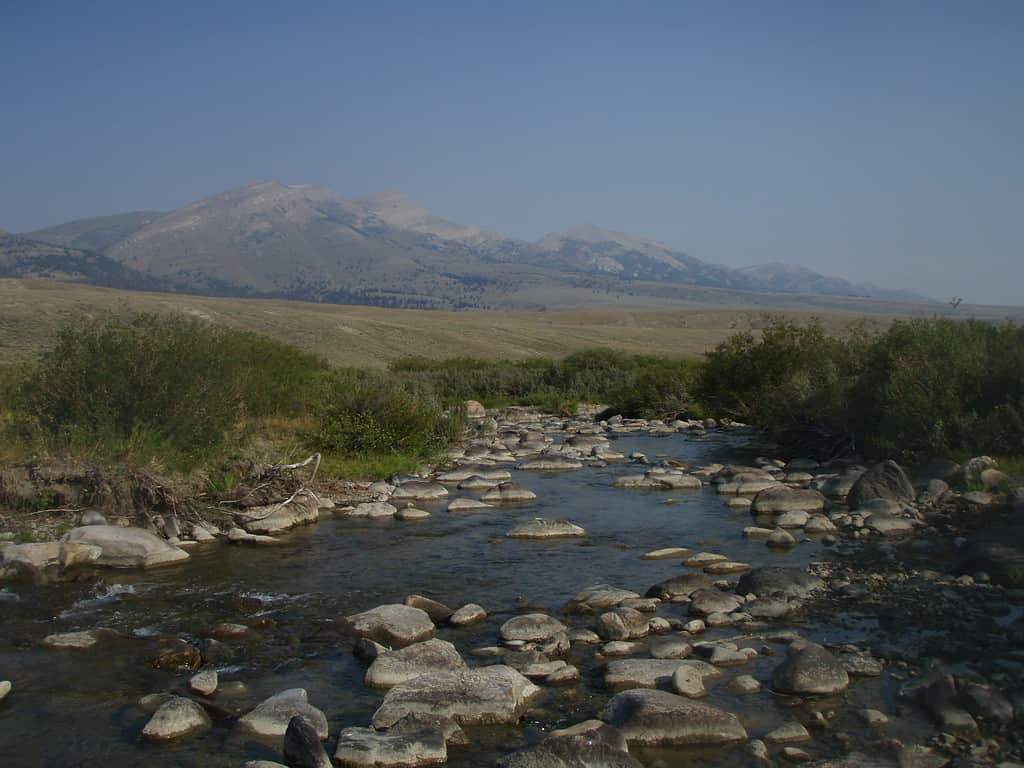
Despite its smaller size, the Ruby River is a haven for trout.
©Mike Cline / CC BY-SA 3.0 – License
Nestled in the breathtaking Ruby Valley, the Ruby River is a remarkable small river that boasts surprisingly large trout despite its size. Anglers are willing to make the short drive from Ennis or Bozeman, and it’s not hard to see why.
The river offers excellent trout fishing, but gaining access to some of the best spots can be challenging due to limited public access. However, once you find your way to the accessible fishing areas, you’ll be blown away by the quality of fishing.
Southwestern Montana is home to the Ruby River, which spans about 76 miles as a tributary of the Beaverhead River. Over the years, the river has gone by several names, including Pah-mamar-roi, Stinkingwater River, Pak-sam-ma-oi, Stinking Water Creek, Philanthropy River, Passamari, and Pashmaroi.
Types Of Fish
The Ruby River in Montana is a popular destination for fly fishing enthusiasts, offering a diverse range of fish species to catch. The upper stretch of the river, located above Ruby Reservoir, is well-known for its average-sized rainbow trout, cutthroat, and grayling, which makes for excellent fly fishing opportunities.
Conversely, the lower stretch of the river, located below Ruby Dam, offers a chance to catch brown trout with an average size ranging from 10-14 inches, although some fish can be 18 to 20 inches long.
Best Spot For Fly Fishing
If you’re looking for a fly fishing spot with stunning scenery and a remote setting, the upper Ruby River within national forest lands is an excellent choice. This area is perfect for anglers who aren’t searching for trophy trout but prefer to fish in a peaceful and pristine environment. The mountains surrounding the river provide a picturesque backdrop, and the river itself runs clear.
With low fishing pressure and excellent access, the upper Ruby River is an ideal spot for fly fishing. However, once the river leaves the national forest lands, access to the river becomes challenging due to private properties surrounding the river.
Summary Of The Top 5 Rivers In Montana For Fly Fishing
| Rank | River |
|---|---|
| 1 | Missouri River |
| 2 | Smith River |
| 3 | Yellowstone River |
| 4 | Gallatin River |
| 5 | Ruby River |
The photo featured at the top of this post is © OLya_L/Shutterstock.com
Thank you for reading! Have some feedback for us? Contact the AZ Animals editorial team.



